CANCALE DREDGING AREAS
All the three forms are represented, with smooth transitions from maculata to each other.
Below are some colour gradations within the form maculata.
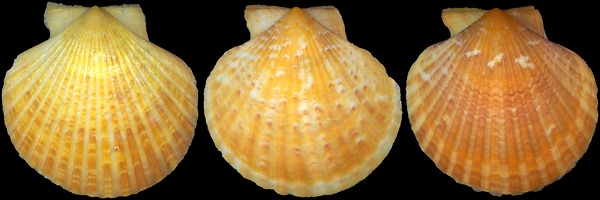
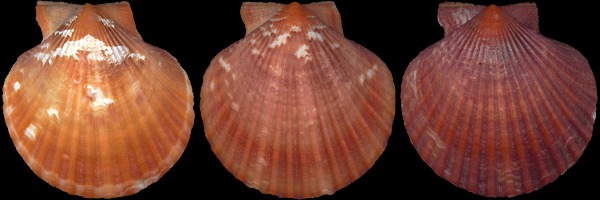
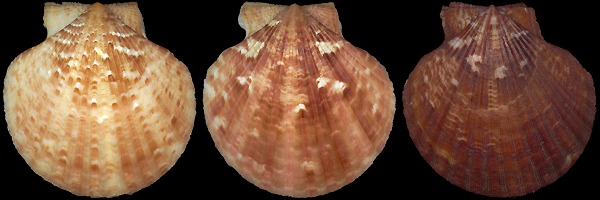
[ Quiberon] | [Saint James...] |
CANCALE DREDGING AREAS | |
| The shells from this zone show the greatest variety in pattern, colour or relief. All the three forms are represented, with smooth transitions from maculata to each other. Below are some colour gradations within the form maculata. | |
 | |
| From yellow to orange. | |
 | |
| From brick-red to purple. | |
 | |
| From beige to brown. |
The concolor shells: | |
True concolor remain uncommon, but are by far easier to find here than in the other areas. As this form is defined by the conjunction of an absence of pattern with a single colour, it is thus an aberration compared to the normal form maculata, from which it derives so closely that naming this variant does not always seem of a great relevance. | |
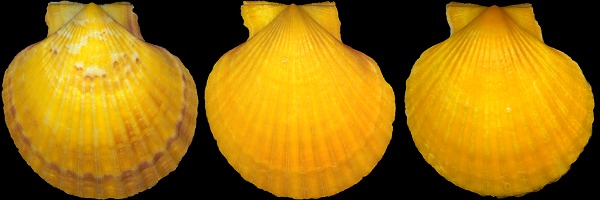 | |
Transition in yellow from maculata to concolor. Like one could note with the shells coming from Le Croisic, there are bigger differences between maculata and lineata: in lineata, if any pattern disappears, a glazed dark line appears, which runs along the ribs. This line is a characteristic which nothing enabled to foresee in maculata. One more thing: the line develops only on a plain colour background, usually white but not inevitably. |
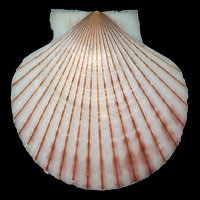 | 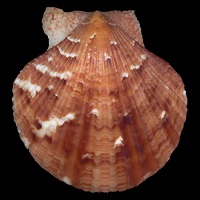 | 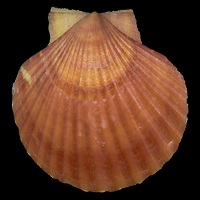 |
From left to right: lineata, maculata, and a quasi concolor from Le Croisic. There is an obvious relationship between maculata and concolor, while the effort to deploy to pass from maculata to lineata makes necessary to have the transition under the eyes to be convinced that these two shells belong to the same species. |
Other transitions to concolor: | |
| Orange Purple |
Stats |
| Forms: maculata 80% lineata 18% concolor 2% | Background color : white 2% orange 11% rose to purple 13% lemon to yellow 19% pale brown to maroon 52% | |
[Next plate with interesting pieces] | [Summary] |